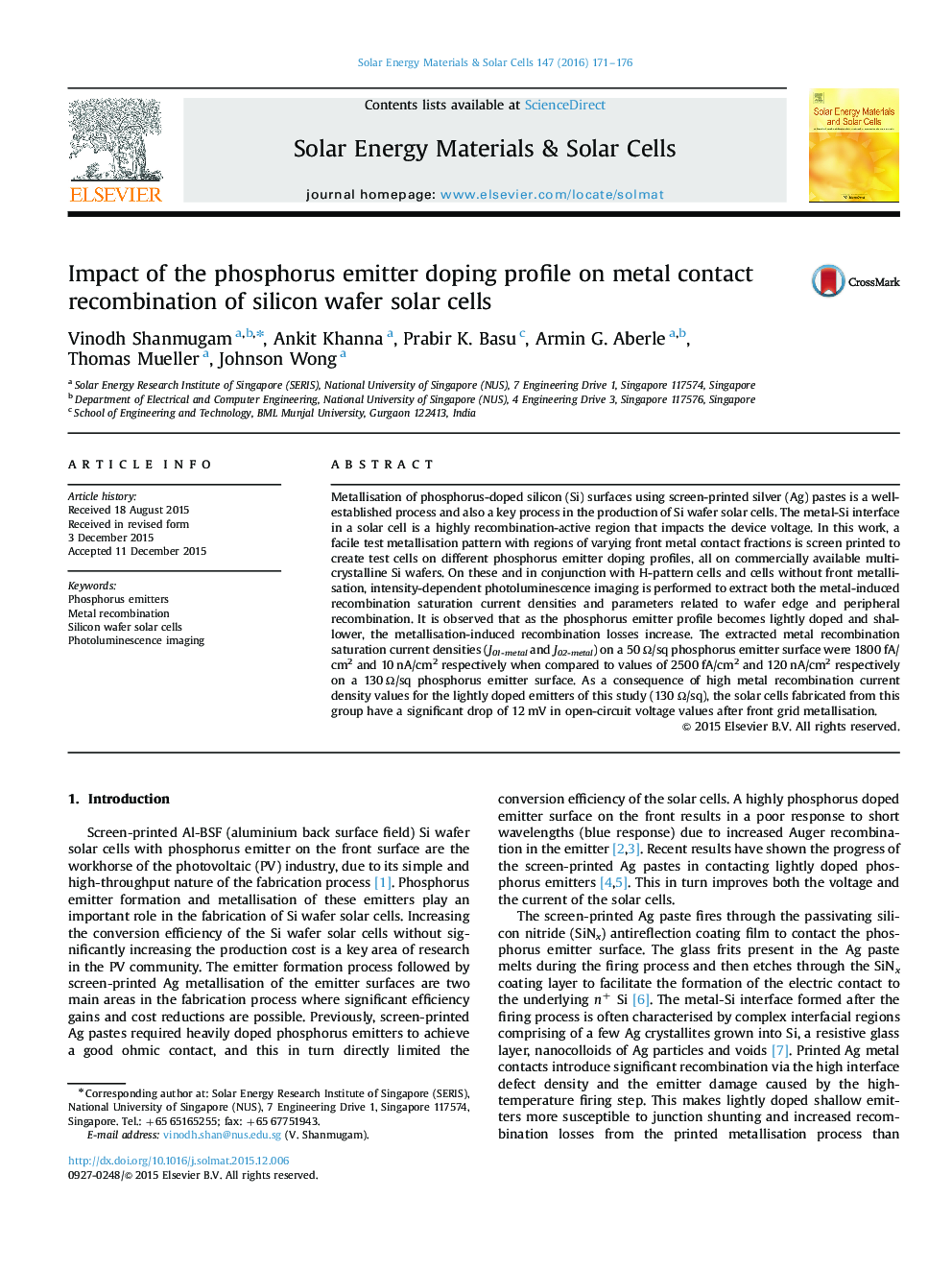| Article ID | Journal | Published Year | Pages | File Type |
|---|---|---|---|---|
| 6534829 | Solar Energy Materials and Solar Cells | 2016 | 6 Pages |
Abstract
Metallisation of phosphorus-doped silicon (Si) surfaces using screen-printed silver (Ag) pastes is a well-established process and also a key process in the production of Si wafer solar cells. The metal-Si interface in a solar cell is a highly recombination-active region that impacts the device voltage. In this work, a facile test metallisation pattern with regions of varying front metal contact fractions is screen printed to create test cells on different phosphorus emitter doping profiles, all on commercially available multicrystalline Si wafers. On these and in conjunction with H-pattern cells and cells without front metallisation, intensity-dependent photoluminescence imaging is performed to extract both the metal-induced recombination saturation current densities and parameters related to wafer edge and peripheral recombination. It is observed that as the phosphorus emitter profile becomes lightly doped and shallower, the metallisation-induced recombination losses increase. The extracted metal recombination saturation current densities (J01-metal and J02-metal) on a 50 Ω/sq phosphorus emitter surface were 1800 fA/cm2 and 10 nA/cm2 respectively when compared to values of 2500 fA/cm2 and 120 nA/cm2 respectively on a 130 Ω/sq phosphorus emitter surface. As a consequence of high metal recombination current density values for the lightly doped emitters of this study (130 Ω/sq), the solar cells fabricated from this group have a significant drop of 12 mV in open-circuit voltage values after front grid metallisation.
Related Topics
Physical Sciences and Engineering
Chemical Engineering
Catalysis
Authors
Vinodh Shanmugam, Ankit Khanna, Prabir K. Basu, Armin G. Aberle, Thomas Mueller, Johnson Wong,
